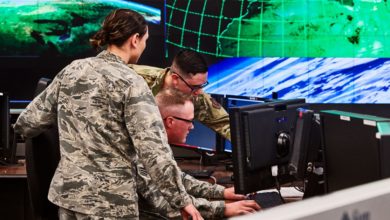Biden’s New IPEF Trade Bloc in Asia: What to Know

TOKYO — President Joe Biden faced a dilemma on trade in Asia: He couldn’t just rejoin the Trans-Pacific Partnership that his predecessor had pulled the U.S. out of in 2017. Many trade deals in the same area were seen as politically harmful for Americans, who associate them with job loss.
Biden then came up with an alternative. During Biden’s visit to Tokyo, the U.S. on Monday planned to announce the countries that are joining the new Indo-Pacific Economic Framework. In the tradition of trade deals, it’s best known by its initials: IPEF.
What would the IPEF do for you?
That’s still to be figured out. Monday’s announcement signals the start of talks among participating countries to decide what will ultimately be in the framework, so the descriptions for now are largely aspirational. In a broad sense, it’s a way for the U.S. to lay down a marker signaling its commitment to remain a leading force in Asia.
White House national security adviser Jake Sullivan said IPEF is “focused around the further integration of Indo-Pacific economies, setting of standards and rules, particularly in new areas like the digital economy, and also trying to ensure that there are secure and resilient supply chains.”
The idea that new standards for world trade are needed isn’t just about discontent among U.S. voters. It’s a recognition of how the pandemic disrupted the entire scope of supply chains, shuttering factories, delaying cargo ships, clogging ports and causing higher inflation globally. These vulnerabilities were made even more apparent in February when Russian President Vladimir Putin ordered an invasion of Ukraine. This caused dangerously high increases in energy and food costs across parts of the globe.
During their meeting in Seoul (South Korea) on May 21st, 2022 at the presidential offices, U.S. President Joe Biden speaks with Yoon Suk-yeol.
Jung Yeon-Je—Getty Images
Who’s going to firm up the details?
Four pillars or topics will guide negotiations with partner nations. The work is divided between Commerce Department staff and U.S. trade representative.
The U.S. trade representative will handle talks on the “fair” trade pillar. This would likely include efforts to shield U.S. workers from job losses as China’s entrance into the World Trade Organization in 2001 led to severe manufacturing layoffs. These job losses devastated parts of the U.S. and angered voters. They also helped to power Donald Trump’s political rise. Trump pulled the U.S. from the Trans-Pacific Partnership nearly as quickly as he took office.
Negotiations on three other pillars will be overseen by the Commerce Department: infrastructure, supply chain resilience, tax and anti-corruption. Biden flew to Japan with Gina Raimondo, Commerce Secretary. She was also by the president’s side during his time in South Korea, where he highlighted investments in U.S. factories by automaker Hyundai and the electronics behemoth Samsung.
No one can join this club. Not Taiwan
IPEF, according to the White House will remain an open platform. But it has faced criticism from the Chinese government that any agreement could be an “exclusive” clique that would lead to greater turmoil in the region.
And there are sensitivities to China, the world’s second-largest economy, in setting up IPEF. China claimed Taiwan as its sovereign island. The pact excludes Taiwan. The reason for this exclusion is significant because Taiwan is a prominent manufacturer of computer chip, an important element in the digital economy which will be part IPEF negotiations.
Sullivan stated that any trade negotiations with Taiwan will be conducted one-to-one.
“We are looking to deepen our economic partnership with Taiwan including on high technology issues, including on semiconductor supply,” Sullivan said. “But we’re pursuing that in the first instance on a bilateral basis.”
It will take how long?
According to an official from the administration, talks are likely to last 12-18 months once they start. This is a fast timeline to reach a global trade agreement. An official insisting on anonymity for discussions about plans said that it was important to build consensus within the U.S.
Read More From Time





